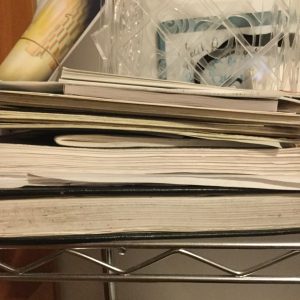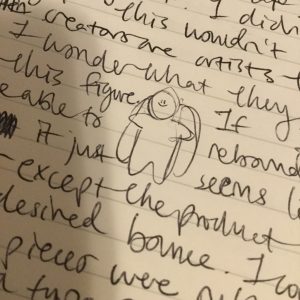From the early ages of drying mashed pulp of something to make paper to now, using abundances of trees to make the accessible bundles of paper we have today, paper has definitely come a long way. In addition to the huge focus on recycling and reusing old paper to make new paper. In many developed countries, paper is something taken for granted, even more so in the age of recycling where people are in the mindset that we can still use more paper because it’s being reused. Maybe this isn’t the case though with the advent of technology, there seems to be less reason to use paper. However, there are strong believers of the traditional way of  learning, which is writing directly on a piece of paper that’s why there hasn’t been a full push to stop using paper and have everything on tablets or on the internet. That kind of world seems unbelievable now but may come one day. Perhaps it’ll come after much persuasion or when we finally realize chopping down trees isn’t cutting it. Either way, switching to a technology-based society would also be difficult because the mass production of it would also be destructive. Will there be any way to fully stop pollution? It’s something we all strive to fix every day, but even simply having the drive to save our planet isn’t enough which is why we need to plan with everything in consideration.
learning, which is writing directly on a piece of paper that’s why there hasn’t been a full push to stop using paper and have everything on tablets or on the internet. That kind of world seems unbelievable now but may come one day. Perhaps it’ll come after much persuasion or when we finally realize chopping down trees isn’t cutting it. Either way, switching to a technology-based society would also be difficult because the mass production of it would also be destructive. Will there be any way to fully stop pollution? It’s something we all strive to fix every day, but even simply having the drive to save our planet isn’t enough which is why we need to plan with everything in consideration.
Monthly Archives: January 2018
Object Impressionism Journal – Entry 6
What’s the function of a cup? We use it to easily fill it up with something to drink at the moment or maybe a few minutes after. Rather than having a function of accessibility, does it also have a function of sophistication? For example, fancy teacup sets that cost almost a hundred fifty dollars. That doesn’t seem like it’d be in an average person’s arsenal. Although I’m mostly talking about ceramic cups that can be used over and over again, there are plastic and  styrofoam cups that are used once and thrown out. They may not be intended for the purpose of being used multiple times through, but in some cases, these plastic and styrofoam cups may be all a person has. On the other hand, we have these vacuum flasks that store liquids at its intended temperature for quite awhile. The ceramic mug sitting in your self may seem like a very common household item, but it’s not something we should take for granted. We should be grateful these containers holding our favorite drinks are in existence because, without them, we’d be cupping our hands or leaving the water running from sink to brush our teeth.
styrofoam cups that are used once and thrown out. They may not be intended for the purpose of being used multiple times through, but in some cases, these plastic and styrofoam cups may be all a person has. On the other hand, we have these vacuum flasks that store liquids at its intended temperature for quite awhile. The ceramic mug sitting in your self may seem like a very common household item, but it’s not something we should take for granted. We should be grateful these containers holding our favorite drinks are in existence because, without them, we’d be cupping our hands or leaving the water running from sink to brush our teeth.
Object Impressionism Journal – Entry 5
In class today, our teacher asked us to describe this stone figure, which I thought of it to be an angel judging from the human-shaped figure from the front and its two long oval shapes attached on its back. We described what we saw and wrote down some questions – at least that’s what we were supposed to do I kind of just word vomited. After the duration of observing, he revealed to us that it was a prototype given by his friend. They were merging cement and rubber pieces (this was what created the glittering effect of the figure) and ideally the product would be able to rebound if thrown on the ground. As we passed this object around, however, this product didn’t feel the w axiness of rubber, so I hesitant in the idea of it bouncing around. The fact that it was a prototype means that his friend experimented with the mixtures or materials of whatever he had to create the idea he had in mind. They might have gone to through several trials to gratify their plans or maybe they’re still going on with their idea. In any case, this shows the importance of experimentation of even the most unlikely things. They may be unimportant to the world and you may be just experimenting out of curiosity, but I believe having the drive to even go through with something especially insignificant actually makes it more significant.
axiness of rubber, so I hesitant in the idea of it bouncing around. The fact that it was a prototype means that his friend experimented with the mixtures or materials of whatever he had to create the idea he had in mind. They might have gone to through several trials to gratify their plans or maybe they’re still going on with their idea. In any case, this shows the importance of experimentation of even the most unlikely things. They may be unimportant to the world and you may be just experimenting out of curiosity, but I believe having the drive to even go through with something especially insignificant actually makes it more significant.
Object Impressionism Journal – Entry 4
I bought my iPad to the class that day because I thought I’d be able to use it for entertainment at some point (maybe break) and also because instead of bringing my laptop, I’d bring my iPad because it was easier to carry. Tablets are practically a mini laptop anyways so there’s virtually no difference. I could easily access the internet with one press – the same goes for my phone. Technology’s presence is so strong in our daily lives that without it we’d feel a great sense of loss. We wouldn’t have the quick access to knowledge that’s predominant currently or the power to send messages to people around the world in one second. Technology has made our daily lives easier, but it also comes  at the cost. This cost may or may not affect everyone, but personally, I find it hard to escape from the web, being wrapped around its threads – as in, I can’t shut down my laptop. I could spend hours and hours on my laptop doing nothing, but watch videos. My friend shares a similar situation scrolling down her Instagram feed. Still, the benefits outweigh the disadvantages and I don’t view this problem as technology’s fault but more so of mine (in that I can’t resist the desire to search through Youtube for hours without rest). But I know there are some people who have an unhealthy relationship with the web, using it as a platform to be someone else as on the internet, no one knows if you’re a dog. I’d also like to touch upon the waste technology produces especially in the mass production of Apple products. But that’s where innovative designers step in, to make technology more efficient and the future brighter.
at the cost. This cost may or may not affect everyone, but personally, I find it hard to escape from the web, being wrapped around its threads – as in, I can’t shut down my laptop. I could spend hours and hours on my laptop doing nothing, but watch videos. My friend shares a similar situation scrolling down her Instagram feed. Still, the benefits outweigh the disadvantages and I don’t view this problem as technology’s fault but more so of mine (in that I can’t resist the desire to search through Youtube for hours without rest). But I know there are some people who have an unhealthy relationship with the web, using it as a platform to be someone else as on the internet, no one knows if you’re a dog. I’d also like to touch upon the waste technology produces especially in the mass production of Apple products. But that’s where innovative designers step in, to make technology more efficient and the future brighter.
Object Impressionism Journal – Entry 3
I remember having a heated conversation with Maithili about transportation in NY when we were creating our service/app. We talked about the whole mess of a map for the MTA subway and all the good ‘ol delays and reroutes on the trains. Even though we have so much technological innovation going on, there’s still no significant change to the types of transportation here. Change is hard and it’ll take time to work and be accustomed to, but as long as it’s for the better, for example, like something self-sustainable so we don’t have to pay for transportation. I mean we already have electric-charged buses so maybe we can with trains too? I’m not really sure how the MTA works, but if it were a free service (or maybe you pay for an initial fee to get your all-in-one MTA card for your personal use) would it become a government paid job? I wonder if this change would increase the number of passengers though and if the platforms and vehicle being used would even be big enough for the new amount. I know it’s already hard to implement changes (I’m looking at you MTA with all your delays and reroutes), but maybe we could spread out and try our ideas in a country who would need better transportation. Ideally, it would be a win-win situation because we’d be able to test out ideas while helping the people who live there. Of course, the drastically different climate would affect the type of transportation as well so this wouldn’t be a direct solution for us as well.
Object Impressionism Journal – Entry 2
Yesterday was my first Games 101 class and my teacher opened up by talking about the transformation of games throughout different time periods. From chess and other intricate and sophisticated games to board games like Monopoly for heaps of fun to the modern technological age of Virtual Reality. There can be all kinds of games. Games for entertainment or for a storytelling experience or even for education. My reason for wanting to go into game design is because I want to express myself through

storytelling. I never really thought of games as a way to express myself until my Games 101 teacher said he believed it was so on the first day of class. Especially because through storytelling, something formed from my experiences. There are many people who believe games to be a waste of time, which is why the games you play should be worth it. So towards game makers as artists, how can they make what they make with purpose? On a global scale, virtual reality could have an impact on education. Games could be a simulation for what they want to practice or learn. However, if its a simulation, it seems to be more of something active rather than academic, which isn’t necessarily a bad thing,
Object Impressionism Journal – Entry 1
That day when I was commuting home, there was a person next to me who greatly smelled like marijuana and it was really nauseating for me. I grew up not liking the smell of cigarettes because I understood the consequences of it (my brother and I would always run when we smelled that smoke). That’s why I had always begged my dad to stop smoking when I saw him hanging out with his friends. That same friend now still smokes when he has his own child, which is unfortunate and I understand these addictions and habits are hard to break and that rehab is pretty useless in some cases, but still I wish tobacco and  marijuana wasn’t something people smoked. I wish it wasn’t something easy to become addicted to. I guess that’s where legalizing and regulation comes in.
marijuana wasn’t something people smoked. I wish it wasn’t something easy to become addicted to. I guess that’s where legalizing and regulation comes in.
(the clouds are supposed to resemble smoke)
People say that marijuana will only become accessible when legalized, but I imagine that there will be more laws in place to prevent easy access to unwarranted addictions. However, after the regulation is placed, what happens to the people who need their fix and are outright refused for it. Should they be forced into rehab or just left to suffer? Maybe before setting these laws, we should look into why these addictions happen, perhaps because of poverty or simply mixed into a group of people who smoke and try to prevent these situations from happening. It’s a very complicated situation since it involves so many aspects if regulation were to be implemented, which is why it shouldn’t be enforced without any thought behind the whole process.